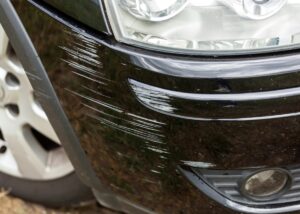How has modern paint repair technology evolved over the years?

The art and science of car paint repair in Sydney has witnessed remarkable transformations over the decades. From the early days of simple hand-applied touch-ups to today’s sophisticated, high-precision technologies, the journey reflects broader advances in automotive engineering, chemistry, and digital innovation. Understanding how modern car paint repair technology has evolved not only highlights the ingenuity behind vehicle maintenance but also shows how convenience, durability, and aesthetics have improved for car owners worldwide.
Early Beginnings: Manual Techniques and Basic Materials
In the earliest days of automotive history, paint repair was largely a manual, labour-intensive process. Mechanics and painters used brushes and rudimentary spray guns to cover scratches, chips, and faded areas. Paints were often oil-based or lacquer-based, which had limitations in terms of durability and environmental impact. Colour matching was mostly done by eye, relying heavily on the skill and experience of the technician.
Introduction of Synthetic Paints and Spray Technology
The mid-20th century brought significant advancements in the chemistry of car paints. Synthetic paints, particularly acrylic and enamel varieties, started replacing older oil-based types. These synthetic paints were more resilient, quicker to dry, and offered better colour retention.
At the same time, spray painting technology became more refined. The development of air compressor-driven spray guns allowed more even application, reducing the “brush stroke” effect that had been a common issue with hand painting. This meant repairs could be completed faster and with improved finish quality.
Colour matching remained a challenge but began improving with the introduction of more standardised paint codes by manufacturers. These codes allowed body shops to purchase pre-mixed paints that were closer to factory colours, helping reduce mismatches.
The Revolution of Basecoat-Clearcoat Systems
By the 1980s and 1990s, the automotive industry widely adopted the basecoat-clearcoat painting system, which dramatically changed paint repair techniques. In this system, the basecoat provides the colour, while a transparent clearcoat layer on top offers gloss and protection.
This two-step system gave car owners a more durable, glossy finish that resisted UV damage and environmental wear better than previous single-layer paints.
Digital Colour Matching and Computerised Mixing
One of the biggest leaps in modern car paint repair came from digital technology. Computerised colour matching systems revolutionised the ability to find the exact hue of a vehicle’s paint. Using spectrophotometers, these devices scan the surface and analyse the colour at a microscopic level, taking into account metallic flakes, pearlescence, and other special effects.
This data is then fed into computerised mixing machines that precisely blend pigments to match the original paint formula. This innovation drastically reduced the time spent on trial-and-error mixing and ensured a far more consistent, professional finish.
This technology also supports databases that include manufacturer paint codes and colour formulations, streamlining the repair process and improving customer satisfaction.
Environmentally Friendly and Health-Conscious Innovations
As environmental awareness increased, so did the regulations around automotive paint usage. Many older paints contained volatile organic compounds (VOCs) that contributed to air pollution and posed health risks to workers.
Use of Nanotechnology and Smart Coatings
In the latest phase of car paint repair technology, nanotechnology and smart coatings have started to take centre stage. Nanoparticles in paint formulations enhance scratch resistance, reduce dirt accumulation, and improve UV protection.
Automation and Robotics in Paint Repair
Automation is also influencing car paint repair, particularly in large-scale body shops and manufacturers. Robots equipped with precision spray guns can apply paint evenly and consistently on complex surfaces, reducing human error.
Final Thoughts
The evolution of car paint repair Sydney technology is a fascinating story of innovation, blending chemistry, digital science, and environmental responsibility. From simple brush strokes and crude materials to computer-aided colour matching, eco-friendly waterborne paints, and self-healing nanocoatings, the industry has come a long way. These advances have made repairs faster, more precise, durable, and safer for both technicians and the environment.


